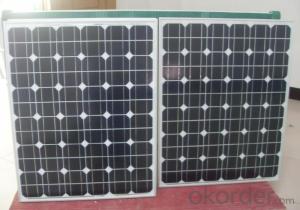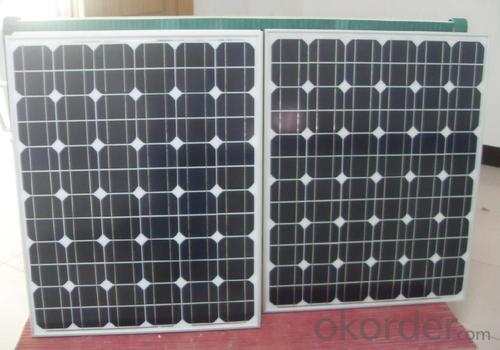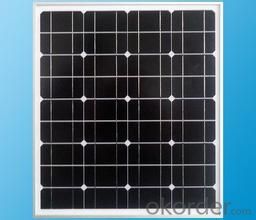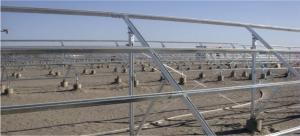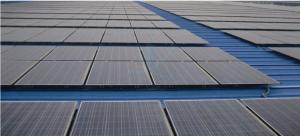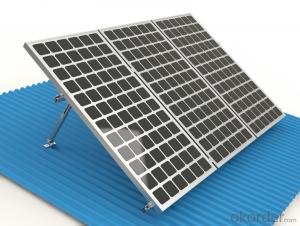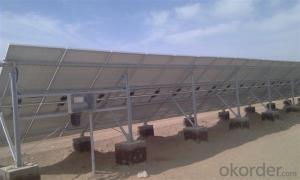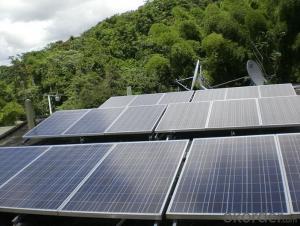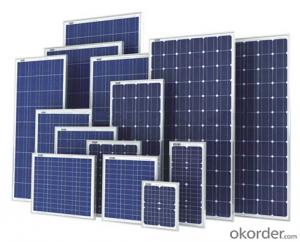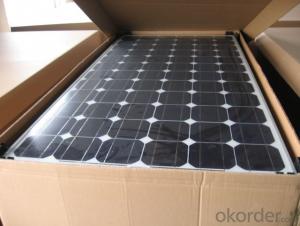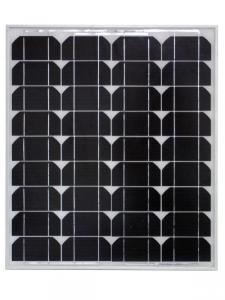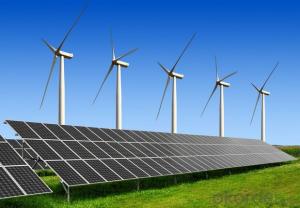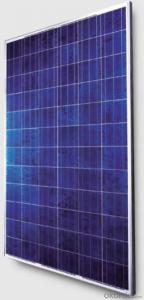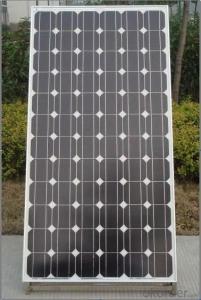Evacuated Solar Vacuum Tube - Solar Monocrystalline Series Panels on Sale
- Loading Port:
- Tianjin
- Payment Terms:
- TT OR LC
- Min Order Qty:
- 1 pallet
- Supply Capability:
- 100000000 pallet/month
OKorder Service Pledge
OKorder Financial Service
You Might Also Like
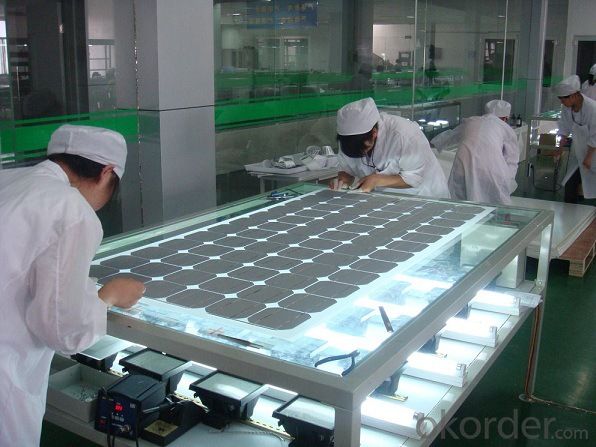
Product Description:
Solar Monocrystalline Series Panels
Introduction of Solar Monocrystalline Series Panels
CNBM Solar photovoltaic (PV) Panel is designed for large electrical power requirements. It is the optimal choice for both on-grid and off-grid power systems. CNBM Solar panel offers high performance of power per square foot of solar array. Monocrystalline silicon(c-Si): often made using the Czochralski process. Single-crystal wafer cells tend to be expensive, and because they are cut from cylindrical ingots, do not completely cover a square solar cell module without a substantial waste of refined silicon. Hence most c-Si panels have uncovered gaps at the four corners of the cells.
Characteristics of Solar Monocrystalline Series Panels
I Solar Cell : High efficiency crystalline solar cell. Even if under the weak light, the solar module can produce maximum power output.
II Tempered glass (toughened glass): Anti-reflecting coating and high transmission rate glass increase the power output and mechanical strength of solar module.
III EVA and TPT: Using high quality EVA and TPT to prevent destroying and water.
IV AI frame: Without screw, corner connection. 6 holes on the frame can be installed easily.
V Junction box: Multi function junction box with water proof.
VI Long lifetime: ≥25 years; Less power decrease
VII Good performance of preventing from atrocious weather such as wind and hails.
VIII Resisting moisture and etching effectively, not effected by geology.
Standard Test Conditions of Solar Monocrystalline Series Panels
The opto-electrical specifications shown below are stabilized values being measured at Standard Test Conditions, Irradiance: 1000W/m2, Spectrum: AM1.5 at 25°C, The info below is subject to manufacturing tolerances. Where appropriate minutes of measurement are available and are used for the dimensioning of the installation.
Advantages of Solar Monocrystalline Series Panels
• CNBM Solar performance guarantees for 25 years
• 12 years guarantee for workmanship
• Timeliness of delivery
CNBM International Corporation's products including Monocrystalline Solar Panel, Polycrystalline Solar Panel have received and enjoyed famous reputation in many countries and regions in the world .As a solar panel supplier in China, we strive to provide our customers with excellent service, superior products and unmatched value.
Characteristics of Solar Monocrystalline Series Panels
Max Power Voltage Vmp (V) | 18.4V | 17.6V |
Max Power Current Imp (A) | 6.52A | 7.39A |
Open Circuit Voltage Voc (V) | 23.0V | 22.2V |
Short Circuit Current Isc (A) | 6.97A | 7.90A |
Max Power Pm (W) | 120W | 130W |
Temperature Coefficient of Cells
NOCT | 47℃±2℃ |
Temperature Coefficients of Isc (%/℃) | 0.064 |
Temperature Coefficients of Voc (%/℃) | -0.33 |
Temperature Coefficients of Pmp (%/℃) | -0.45 |
Mechanical Data Solar Monocrystalline Series
Power | 120W/130W |
Dimension | 1190/1470×670×30mm |
Weight | 9.5kg/11.7kg |
Tolerance | ±3% |
The dimension of the modules can be changed according to the demand of clients
Limits
Operating Temperature | –40 °C to +85°C |
Storage Temperature | –40 °C to +85°C |
Max System Voltage | 700V |
Guarantee Solar Monocrystalline Series Panels
Products Guarantee | 10 yrs free from defects in materials and workmanship |
Performance Guarantee | No less than 90% within 10yrs and no less than 80% within 25yrs |
Certificates | IEC, ISO, TUV, CE |
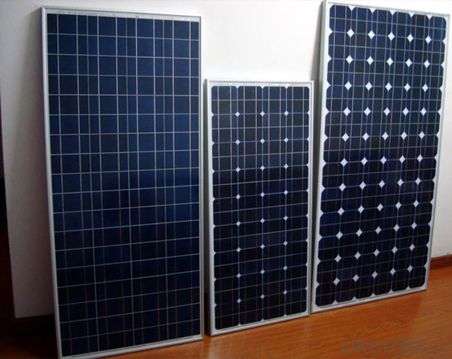
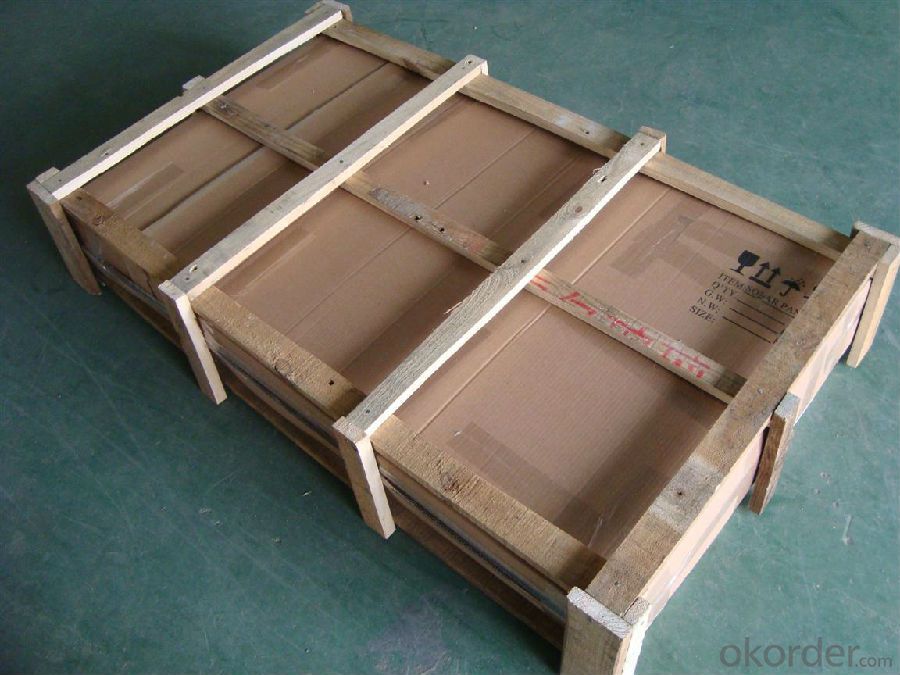
FAQ
We have organized several common questions for our clients,may help you sincerely:
1. What’s price per watt?
A: It’s depends on the quantity, delivery date and payment terms of the order. We can talk further about the detail price issue. Our products is high quality with lower price level.
2. Can you tell me the parameter of your solar panels?
We have different series of cells with different power output, both from c-si to a-si. Please take our specification sheet for your reference.
3. How do you pack your products?
We have rich experience on how to pack the panels to make sure the safety on shipment when it arrives at the destination.
4. Can you do OEM for us?
Yes, we can.
5. How long can we receive the product after purchase?
In the purchase of product within three working days, We will arrange the factory delivery as soon as possible. The perfect time of receiving is related to the state and position of customers. Commonly 7 to 10 working days can be served.
- Q: Are solar vacuum tubes suitable for heating large warehouses or factories?
- Yes, solar vacuum tubes can be suitable for heating large warehouses or factories. These tubes are highly efficient in capturing solar energy and converting it into heat, making them an effective solution for large-scale heating requirements. Additionally, their modular design allows for easy installation and scalability, making it feasible to meet the heating demands of large spaces.
- Q: Is there any difference between the solar vacuum tube and the other?
- The purple tube, the three high tube and the ordinary pipe are all similar, originally the ordinary tube has achieved the very high potency, the three high tube and the purple tube are higher than the ordinary, but is too limited
- Q: Can solar vacuum tubes be used in cold climates?
- Yes, solar vacuum tubes can be used in cold climates. The vacuum insulation of the tubes helps to retain heat, allowing them to function efficiently even in low temperatures. Additionally, the tubes are designed to absorb sunlight, converting it into heat, making them suitable for use in cold climates where sunlight may be limited.
- Q: Better give me an answer before February 9th! Thank you ~!
- 4 all glass vacuum tube using single end opening design, sealing ring up through the end of the inner tube and the outer tube, the inner tube is sealed at the other end of the hemispherical head, spring clip is used to the head supported on the cover glass tube inside end of the inner tube, the absorption of solar radiation and temperature rise, the formation of glass knob the free end of thermal expansion, and the buffer when the water heater works by vacuum tube open end of thermal stress;5 vacuum tube after being heated, the original is the adsorption of trace gases on the pipe wall (mainly water vapor) will be released, effect of vacuum getter and getter film is used to absorb the released gas, in order to maintain a high vacuum heat collecting tube.
- Q: Solar water heater can be added to the water it was said that the cold water than a major sink will really blow it
- If the water temperature in the container is lower than the water temperature in the tube, it will sink. The water heater is designed according to this principle. The vacuum tube is arranged below, and the container is arranged above.
- Q: Are solar vacuum tubes suitable for use in restaurants or commercial kitchens?
- Yes, solar vacuum tubes are suitable for use in restaurants or commercial kitchens. They are a cost-effective and energy-efficient solution for heating water or generating steam, which is essential in food preparation and cleaning processes. Solar vacuum tubes can provide consistent hot water supply throughout the day, reducing the reliance on traditional energy sources and lowering operational costs. Additionally, their compact size allows for easy installation on rooftops or outdoor spaces, making them ideal for commercial settings with limited space availability.
- Q: How much space is required for installing solar vacuum tubes?
- The space required for installing solar vacuum tubes depends on various factors, such as the number of tubes needed, the desired system capacity, and the available sunlight. Generally, solar vacuum tubes are compact and can be installed on rooftops or in open areas. A rough estimate is that around 1-2 square meters of space per tube is typically required, but it is recommended to consult with a solar professional to determine the exact space requirements for a specific installation.
- Q: Are solar vacuum tubes suitable for hotels or resorts?
- Yes, solar vacuum tubes are suitable for hotels or resorts. They are highly efficient in capturing solar energy and can provide hot water for showers, pools, and other amenities. Additionally, their compact design and aesthetic appeal make them a practical and attractive choice for commercial properties.
- Q: Can solar vacuum tubes be used for heating industrial dryers?
- Yes, solar vacuum tubes can be used for heating industrial dryers. The vacuum tubes absorb solar energy and convert it into heat, which can then be utilized to provide the required heat for industrial drying processes.
- Q: Are solar vacuum tubes suitable for high-rise buildings?
- Yes, solar vacuum tubes are suitable for high-rise buildings. They are a highly efficient and effective technology for harnessing solar energy even in tall buildings. The vacuum insulation helps to minimize heat loss and ensures optimal performance, while their modular design allows for easy installation on rooftops or facades of high-rise structures. Additionally, solar vacuum tubes can provide hot water and even contribute to space heating in these buildings, making them a viable and sustainable option for energy generation.
Send your message to us
Evacuated Solar Vacuum Tube - Solar Monocrystalline Series Panels on Sale
- Loading Port:
- Tianjin
- Payment Terms:
- TT OR LC
- Min Order Qty:
- 1 pallet
- Supply Capability:
- 100000000 pallet/month
OKorder Service Pledge
OKorder Financial Service
Similar products
Hot products
Hot Searches
